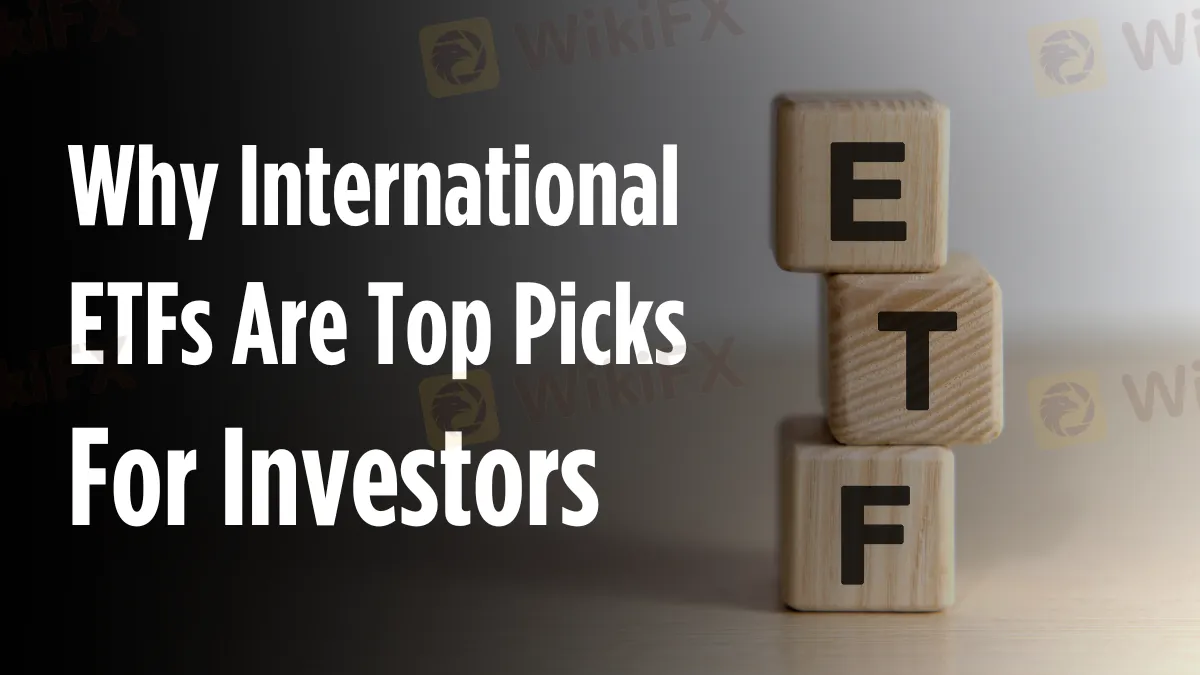Abstract:Explore why International ETFs are top picks for investors, offering global diversification, emerging market exposure, and currency benefits with manageable risks.

In today's globalized world, investors increasingly look beyond their borders to diversify their portfolios and tap into growth opportunities abroad. Among the various investment options available, International ETFs (Exchange-Traded Funds) have become a popular choice for many. These funds offer exposure to global markets, allowing investors to benefit from the economic growth and opportunities in different regions. But why exactly are International ETFs the top picks for investors? Let's explore their advantages and drawbacks to understand this better.
Types of ETFs
Before diving into International ETFs, it's essential to understand the broader landscape of ETFs. There are several types of ETFs that cater to different investment needs:
- International ETFs: These funds invest in markets outside the investor's home country, providing exposure to global economies.
- Sector-Specific ETFs: These funds focus on specific sectors of the economy, such as technology, healthcare, or energy.
- Bond ETFs: These funds invest in fixed-income securities, such as government or corporate bonds, offering lower risk and steady income.
- Commodity ETFs: These funds invest in commodities like gold, oil, or agricultural products, providing a hedge against inflation and currency fluctuations.

Why International ETFs Stand Out
Pros of International ETFs
- Global DiversificationOne of the most significant advantages of International ETFs is global diversification. By investing in these funds, investors can spread their risk across various countries and regions, reducing the impact of any market's volatility. This is particularly beneficial during economic downturns in the home country, as growth in other regions can help balance the overall portfolio.
- Exposure to Emerging MarketsInternational ETFs often include exposure to emerging markets, which have the potential for higher growth compared to developed markets. Countries like China, India, and Brazil are experiencing rapid economic expansion, and investing in these markets can offer substantial returns. International ETFs provide a convenient way to gain access to these opportunities without the need to invest directly in individual foreign stocks.
- Currency DiversificationInvesting in International ETFs also offers currency diversification. As these funds hold assets in different currencies, they can help investors mitigate the risk associated with fluctuations in their home currency. A weaker domestic currency could result in higher returns from foreign investments when converted back, providing an additional layer of protection.
- Ease of AccessInternational ETFs make it easy for investors to access global markets without the complexities of dealing with foreign exchanges or regulations. They are traded on domestic stock exchanges like any other ETF, making them a convenient option for investors looking to diversify globally.
Cons of International ETFs
- Currency RiskWhile currency diversification can be an advantage, it also comes with its own set of risks. Currency fluctuations can negatively impact the returns of International ETFs. If the foreign currency weakens relative to the investor's home currency, it can lead to lower returns or even losses despite positive performance in the underlying assets.
- Political and Economic RiskInvesting in international markets exposes investors to political and economic risks that may not be present in their home country. Changes in government policies, financial instability, or geopolitical tensions can adversely affect the performance of International ETFs. For example, trade wars, regulatory changes, or political unrest in a particular region can lead to market downturns, impacting the returns of these funds.
- Higher Expense RatiosInternational ETFs often come with higher expense ratios compared to domestic ETFs. This is due to the additional costs associated with managing investments in foreign markets, including currency hedging, legal complexities, and other operational expenses. These higher fees can eat into the overall returns, making it essential for investors to consider the cost-effectiveness of these funds.
- Limited InformationWhile investing in International ETFs provides exposure to global markets, it can also mean limited access to information about the underlying assets. Foreign markets may have different reporting standards, and information may not be as readily available or transparent as in the investor's home country. This lack of information can make it challenging to assess the actual value and performance of the investments.
Related news:
Conclusion
International ETFs have become top picks for investors looking to diversify their portfolios and tap into global growth opportunities. They offer several advantages, such as global diversification, exposure to emerging markets, currency diversification, and ease of access. However, they also come with risks, including currency risk, political and economic instability, higher expense ratios, and limited information.
For investors considering International ETFs, it's crucial to weigh these pros and cons carefully and ensure that the benefits align with their investment goals and risk tolerance. By doing so, they can make informed decisions and potentially reap the rewards of global investing.
This article is based on an analysis by Interactive Brokers, highlighting the critical factors investors should consider when choosing International ETFs.
Stay informed on International ETFs. Visit WikiFX News for the latest updates and investment tips!











